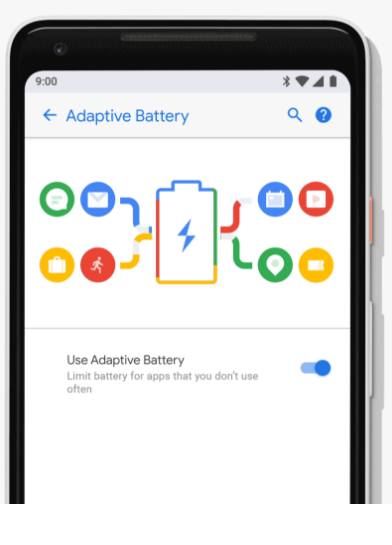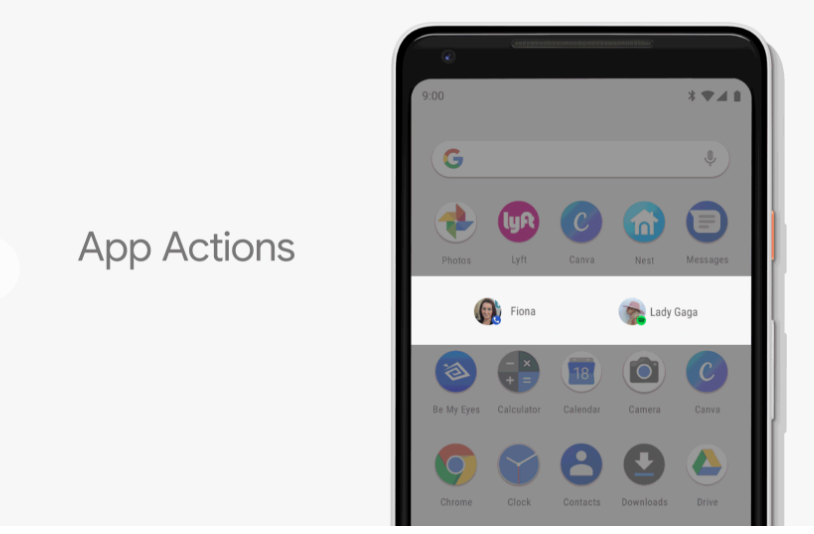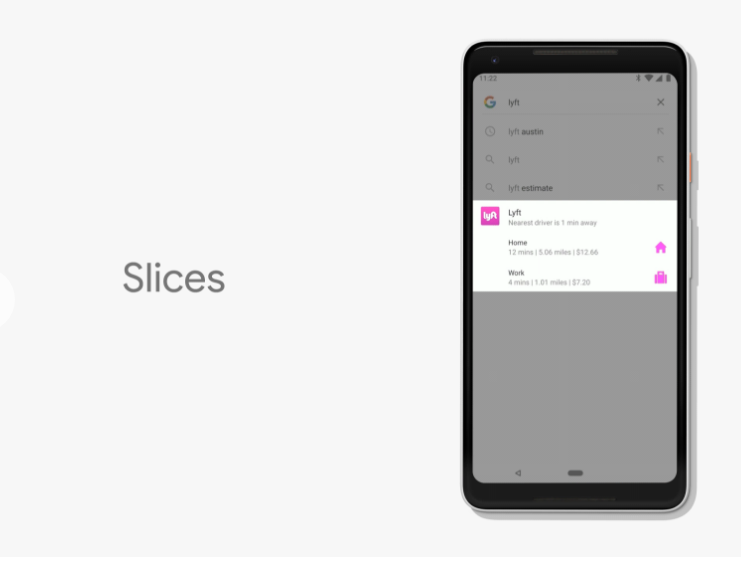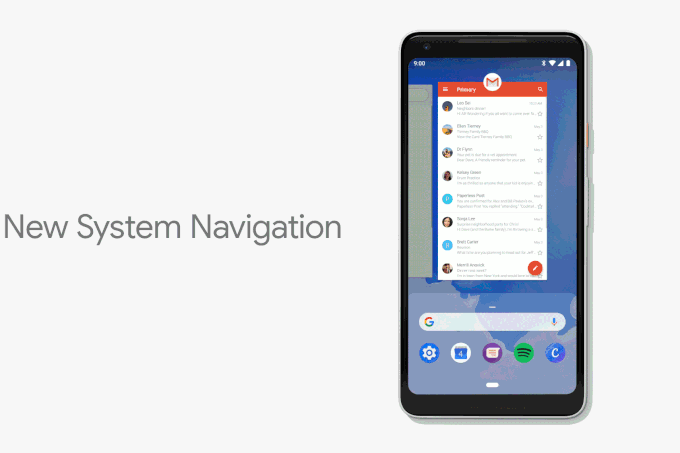Google announced the beta version of Android P at the I/O 2018 conference last week. This is one of the major updates to the mobile operating system since the release of Android 5.0 Lollipop, with a myriad of features like design changes, new animations, better notification system, and plenty of helpful shortcuts that improve the overall user experience.
A decade has gone by since Google showcased the first version of Android in 2008. So it was obvious that this 10th version of the OS called for an update that would grab the attention of users, and developers alike. The previous version, Android Oreo, failed to delight users by going beyond their expectations. It holds the least amount of market share when compared to its previous three predecessors. So the stakes are higher than usual this time around for the world’s favorite mobile OS by Google.
In his opening keynote, Sundar Pichai, CEO at Google, came all guns blazing with the focus, as usual, on the new developments in AI, a somewhat controversial demo from the Google’s voice assistant, and Google’s very own AI-specific processing units (TPUs). But amidst all these cool AI related stuff, he gave the world a peek into the new features of the much awaited Android P. He spoke of how Google have introduced some key capabilities in Android to help people find the right balance between digital and real life.
After some more keynotes and sessions, it became clear that these new Android features have a theme which can be classified into three broad areas: Intelligence, Digital Wellbeing, and Simplicity.
Machine intelligence on mobile
Machine learning has been a key area of development for Google since the last few years. With each Android release, more and more features have started using these machine learning capabilities. And Android P is a step in this direction to bring AI at the core of the operating system, making smartphones smarter.
Here’s a quick rundown of enhancements in this category:
Adaptive battery
Pretty much found in every user survey, battery life has been a top priority. With Android P, Google has partnered with its AI subsidiary DeepMind, to provide a more consistent battery experience to the users. It uses a ‘deep convolutional neural network’ or in simple words ‘on-device machine learning’, to figure out which apps the users are likely to use in the next few hours and which apps are not going to be used at all throughout the day. This usage pattern is taken into consideration by the Android P operating system to spend battery power on the apps which you are actually going to use. This results in a considerable improvement in the battery performance by the OS, which is mostly required to update the apps in the background.

Image source: Google Blogs
Adaptive Brightness
Another AI-powered feature learns how users set their brightness according to the surrounding ambient lightning. Based on these user preferences Android P automatically sets the brightness, in a power efficient way. Although most smartphones already have ‘auto-brightness’ as an inbuilt feature, the main difference here is, they do not take the user preference and the environmental conditions into a picture. Google claims that more than 50% of the users testing on Android P have stopped adjusting the brightness manually.
App Actions
Last year in Android Oreo, Google launched a new feature called ‘predicted apps’, which predicts the next app that the user is most likely to launch. If this wasn’t spooky enough, Google released App Actions this year, which predicts the next action or the task that the user is going to perform and pins it on top of the Google Launcher.

Image source: Google Blogs
Slices
This is one interesting feature where Google tries to bring a slice of the app UI to the users while they are searching for the app on the phone.
Suppose you were searching for the ride-sharing app Lyft on Google, it would provide a slice of the UI from Lyft in the search drop down with your preferred options. In this case, it might show your predetermined rides to home or work which you can select right then and there from the search menu in Google. This feature totally depends on the developers, if they decide to provide a snapshot of the UI from the app on Google as it risks the users from not visiting the actual app.
While all these AI features sound cool and claim to provide a rich user experience, it also factors in the ‘big question’ about the user data. From the looks of it, these features leverage a lot of user data and utilize app usage patterns, which to some or most of the users is quite alarming. Take the case of the recent breach of user data on Facebook. Google claims that these features are a result of ‘on-device machine learning’ where the data is kept private or restricted to just the users’ phone.

Image source: Google Blogs
Digital wellbeing takes center stage
The next set of features and tools is what Google is calling ‘Digital Wellbeing’. The goal here is to enable users to understand their habits, control the demands technology places on their attention, and focus on what actually matters. Digital wellbeing was started by Tristan Harris, a former Product Manager at Google and co-founder of the Center for Humane Technology. While working on the Inbox app, Tristan found himself becoming increasingly disillusioned by the overwhelming demands of the tech industry and wrote a memo on Digital wellbeing that went viral in the company.
Sameer Samat, vice president of Product Management at Google, gave an interesting talk at I/O this year, which extended Tristan’s philosophy and talked about the digital wellbeing of the users and how Android P claims to help users achieve it with its brand new set of tools.

Image source: Google Blogs
Dashboard
Just as a Fitbit tracker gauges for activity and informs to motivate you, Google’s Android P update includes a dashboard to monitor how long you’ve been using your phone and specific apps. It’s supposed to aid you in understanding what you’re spending too much time on so that you can adjust your behavior.
App timer
While Dashboard gives a summary of the time spent on the phone, it also allows users to tap into the apps they are using and set a time limit on it for daily usage. Once the app crosses the time limit the app icon will soon fade to gray on the home screen and it won’t launch, suggesting that the user has crossed the time limit.
Do Not Disturb
Do Not Disturb is already available as a feature on Android devices to prevent users from hearing any kind of notification from text or emails. This feature comes in handy particularly when you are in a meeting or away or not paying attention to your phone. The new Do Not Disturb in Android P one step further and takes out all the visual indicators or notifications even if you have the device in your hand allowing you to do better things with your phone, like reading. Google is also adding a feature where you can turn the phone on its face to activate do not disturb automatically. No more dinner interruptions.
Wind down
Generally, people tend to spend a lot of time on their phones while they are in bed just before sleeping. Previously smartphones used to block the notification light at bedtime but Google is going one step further with the ‘Wind Down’ feature. As your bedtime approaches this feature would turn your screen to grayscale making the apps less tempting. Google hopes this will let users “remember to get to sleep at the time [they] want”.
Overall, these features sound like a real step forward taken by Google in making the phones less addictive, but there is no proven research. Much of what we know about these features is based not on peer-reviewed research but on anecdotal data. And if users don’t enable any of these Digital Wellbeing features then the new version of Android isn’t going to do anything better.
UI Simplicity once again in vogue
One of the key takeaways from the previous versions of Android releases has been the simplicity in the UI. Google has been trying to make the UI more accessible and approachable to the current as well as the new users. Android P is not only banking on the suggestions and patterns from the machine learning capabilities but also making the user experience more simplistic.
Gesture-based navigation controls
Navigation gestures aren’t new. Mobile operating systems such as webOS, MeeGo, and Blackberry 10 all had previously supported navigation gestures. But iPhone X popularized it with the removal of the home button. this meant that gestures are the only way to navigate the device. This change has been generally appreciated by users as it is simple and easy to learn.
Google has introduced Gestures in the Android P to substitute the buttons for various actions such as swipe up to open the recent apps menu called Overview while double tapping it opens the app drawer. Swipe down to return to the home screen, and swipe left and right to switch between the recently-opened apps.

Image source: Google Blogs
Other features in this segment include manual rotation, smart text selection, quick setting, among others. You can read about these features on the official web page of Android.
Beyond Intelligence, simplicity and digital wellbeing, there are hundreds of additional improvements coming in Android P, including security and privacy improvements such as DNS over TLS, encrypted backups, Protected Confirmations and more.
The initial reaction to all these features was decidedly mixed; while some praised the evolution of Google’s operating system, others slammed it for looking or adopting similar features from Apple’s iOS.
Overall the features look great, but we would like to see some rigorous investigation that suggests that people actually feel empowered while using the latest version of Android. Google still haven’t told us what dessert-themed name the Android update will take, saving the naming announcement for later in the summer, closer to the actual release date. Pancake, Peanut butter, Pumpkin Pie, and Popsicle are some of our top predictions.
The Android P Beta is available now on Google Pixel, Essential Phone, OnePlus, Mi, Sony, Essential and Oppo handsets.
Read Next
- Top 5 Google I/O 2018 conference Day 1 Highlights
- Google News’ AI revolution strikes balance between personalization and the bigger picture
- Google’s Android Things, developer preview 8: First look










![How to create sales analysis app in Qlik Sense using DAR method [Tutorial] Financial and Technical Data Analysis Graph Showing Search Findings](https://hub.packtpub.com/wp-content/uploads/2018/08/iStock-877278574-218x150.jpg)